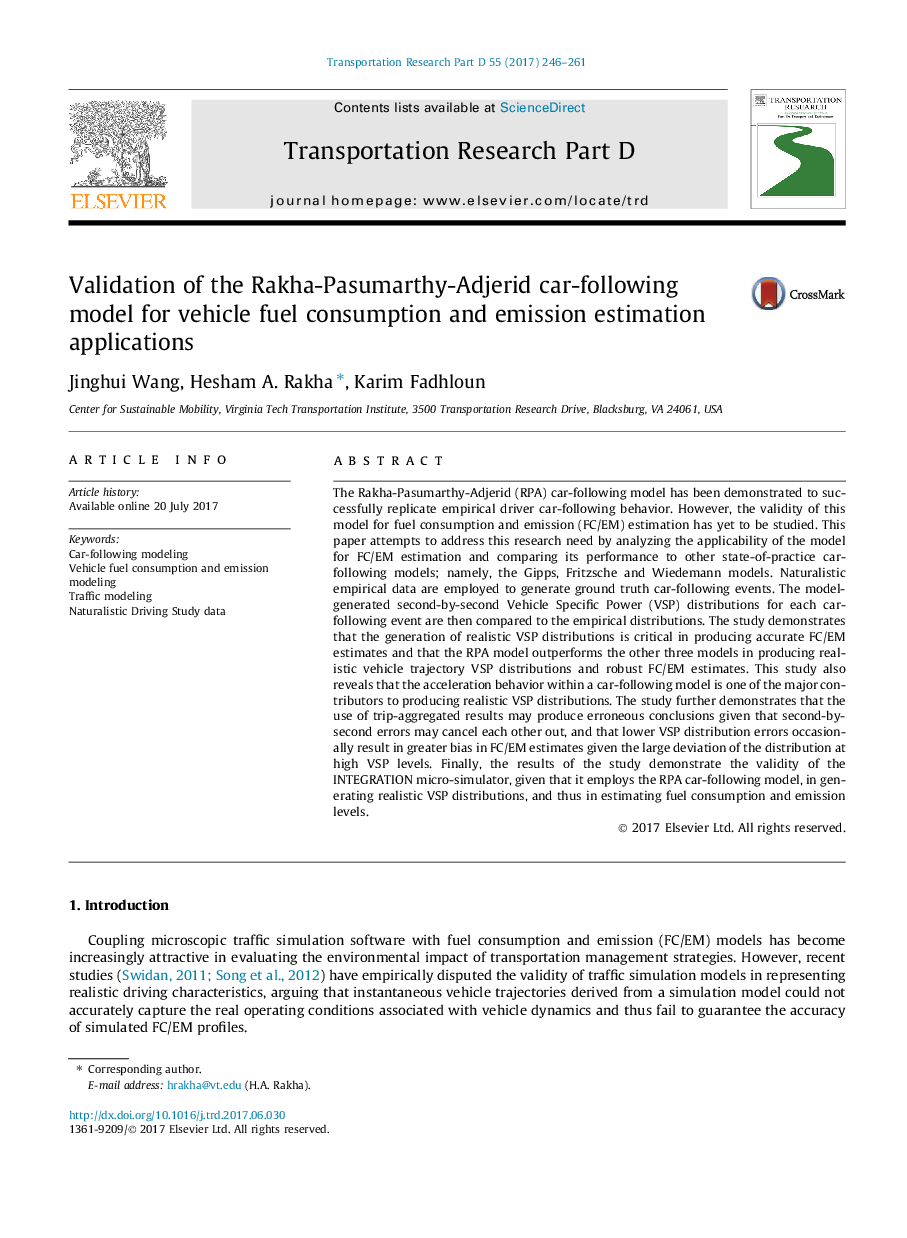| Article ID | Journal | Published Year | Pages | File Type |
|---|---|---|---|---|
| 5119378 | Transportation Research Part D: Transport and Environment | 2017 | 16 Pages |
â¢Realistic Vehicle Specific Power is critical for accurate estimation of fuel consumption and emissions.â¢The RPA model outperforms other car-following models in producing realistic fuel consumption and emission estimates.â¢Acceleration modeling is the major contributor to producing realistic VSP distributions.
The Rakha-Pasumarthy-Adjerid (RPA) car-following model has been demonstrated to successfully replicate empirical driver car-following behavior. However, the validity of this model for fuel consumption and emission (FC/EM) estimation has yet to be studied. This paper attempts to address this research need by analyzing the applicability of the model for FC/EM estimation and comparing its performance to other state-of-practice car-following models; namely, the Gipps, Fritzsche and Wiedemann models. Naturalistic empirical data are employed to generate ground truth car-following events. The model-generated second-by-second Vehicle Specific Power (VSP) distributions for each car-following event are then compared to the empirical distributions. The study demonstrates that the generation of realistic VSP distributions is critical in producing accurate FC/EM estimates and that the RPA model outperforms the other three models in producing realistic vehicle trajectory VSP distributions and robust FC/EM estimates. This study also reveals that the acceleration behavior within a car-following model is one of the major contributors to producing realistic VSP distributions. The study further demonstrates that the use of trip-aggregated results may produce erroneous conclusions given that second-by-second errors may cancel each other out, and that lower VSP distribution errors occasionally result in greater bias in FC/EM estimates given the large deviation of the distribution at high VSP levels. Finally, the results of the study demonstrate the validity of the INTEGRATION micro-simulator, given that it employs the RPA car-following model, in generating realistic VSP distributions, and thus in estimating fuel consumption and emission levels.
